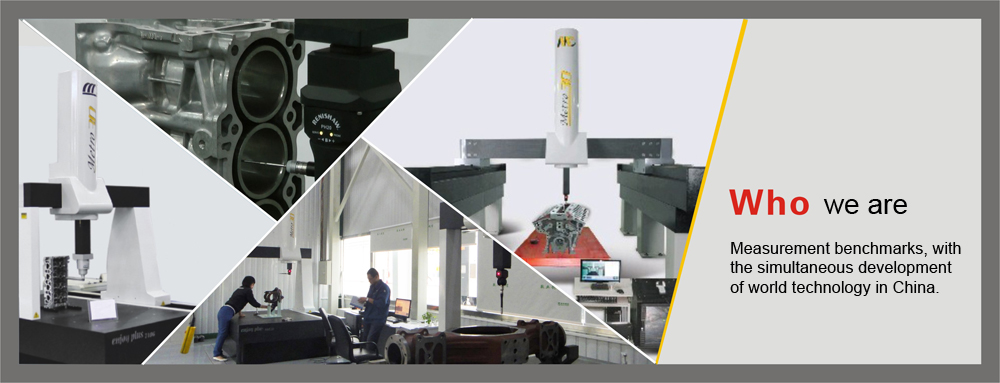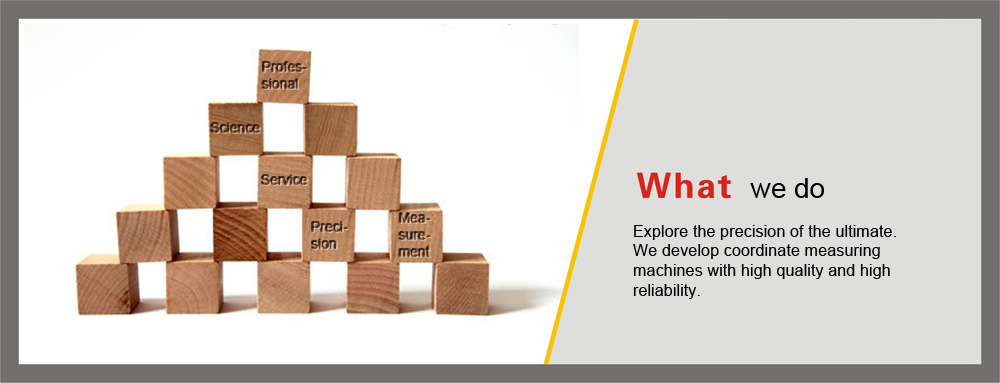
Difference between calibration and verification of measuring
Difference between calibration and verification of measuring system
Calibration is defined in the ISO10012—1 “Quality Guarantee Requirement for Measuring and Test Equipment” as “a group of operations to determine the interrelations between measuring instruments or measuring system’s indication values or values represented by object gauge or standard substance and the corresponding known value under the specified conditions”.
Note: 1. The calibration result can be used to assess the indication errors of measuring instruments, measuring system or object gauges or give the values to any ruler;
2 The calibration also can be used to determine other measuring features;
3 The calibration results can be recorded in the documents which are occasionally called calibration certificates or calibration report;
4 On occasion, the calibration result is expressed as correction value, calibration factor or calibration curve.
Verification is defined in ISO/IEC Guide 25—1990 “General Requirements for Calibration and Test of Lab Technical Capability” as “providing evidence by calibration and test to confirm whether it complies with the requirements” (ISO 8402/DADI—3.37, notes added according to the purpose of the guidebook).
Note: 1. in order to connect with the measuring instrument management, the purpose of verification is to verify the deviations between the indicating value of measuring instruments and the corresponding known value so as to ensure it is always less than the max. permissible error specified in standard, regulations and rules related to measuring instrument management.
2 Corresponding decision will be made according to the results of verifications, including continued use, further investigation, repairs, degrading or scrapping etc. Under any circumstances, verifications should be recorded on the corresponding sheets after it is finished.
International Measuring Organization defines “verification” as “finding out and confirming the measuring instruments are in compliance with the legal requirements including inspection, marking or issuance of verification report”.
As indicated by the definitions above, you can see the essential differences of calibration and verification. Therefore, both of them can not be mixed or replaced by each other.
The main differences are as followed:
1、Different purposes
Calibration is to assess the indication errors of measuring instruments against the measuring standard to ensure the values are correct, which is a group of operations tracing back from bottom to top. There should be specific requirements to be made according to the calibration regulations of organizations for the assessment of indication errors. Calibration should be made according to the calibration period and be recorded correctly and attached with calibration signs. Besides assessment for the indication errors of measuring instruments and determination of relevant measuring features, the calibration results also can be expressed as correction values or calibration factor to guide the operation of measuring. For example, the calipers used by some machinery manufacturer are found to be 0.2mm over the standard. This data can be used as corrected value and be indicated in the calibration mark and records that the corrected value is 0.2mm larger than the standard devices. During the actual measuring by using the calipers, the corrected value 0.2mm should be deducted to get the actual value of object. As long as the trace back purpose is reached and the indication errors are understood clearly, it can be regarded that calibration is completed.
Verification is to conduct compulsory comprehensive assessment on the measuring instruments. The comprehensive assessment falls in the category of value unification, which is a value transmission process made from top to bottom. Verification should assess whether the measuring instrument complies with the requirements, i.e. the error range indicated by verification regulations of measuring instruments. Verification is to confirm whether the error range of measuring instruments is within the error range specified.
2、Different targets
The calibration targets are the measuring devices outside the compulsory verification. Measuring devices subject to the non-compulsory verification of China mainly refer to the measuring instruments widely used in the production and service delivery including incoming goods inspection, process inspection and the measuring tools used by final product test institutes.
The verification targets are the measuring instruments specified by China Measuring Laws to be forcedly verified. Article 9 of China Measuring Law states that the measuring administration department of People’s Government should carry out compulsory verification on the public standard measuring instruments, and the highest standard measuring instruments used by department, enterprises and public institutions and the working measuring instruments used for the trade settlement, safety protection, medical hygiene and environmental monitoring etc. and listed in the compulsory verification catalogue. Those that have not been verified compulsorily or verified to be disqualified shall not be put into use. Therefore, the verification targets mainly include three categories of measuring instruments which are listed as below.
1 The measuring benchmark including international measuring benchmark and national measuring benchmark is defined in ISO 10012—1 “Quality Guarantee Requirements for Measuring and Test Equipment” that international measuring benchmark: The measuring benchmark is recognized by international community and used as valuation basis for other related measuring standards in the international community. National measuring benchmark: The measuring benchmark is recognized by national authority and used as valuation basis for other related measuring standards in China.
2 The measuring standard is defined in ISO 10012—1 standard as the object measuring instruments, measuring instruments, standard substance or system which are used to define, realize, maintain and reproduce one unit or one or more than one known values and compare as well as transmit them to other measuring instruments. (eg. a. 1kg mass standard b. standard measuring block c. 100Ω standard resistance d. Weston standard battery).
3 The Measuring Law of China and Working Measuring Instrument Compulsory Verification Regulations of China both state that those instruments that are used for trading settlement, safety protection, medical hygiene, and environmental monitoring are to be verified compulsorily. In the detailed catalogue, there are 59 measuring instruments to be listed in compulsory verification scope. It is noted that Article 2 of the catalogue emphasizes that the items in the catalogue used for trading settlement, safety protection, medical hygiene and environmental monitoring are to be verified compulsorily. This means that only such measuring instruments in the 59 items that are used for four categories above remain with the compulsory verification scope. Therefore, the measuring instruments in the 59 items not used for four categories above shall not fall in the compulsory verification scope. The measuring instruments outside the four categories above fall in the non-compulsory verification scope, i.e. calibration scope.
3、Different natures
Calibration is not compulsory but a voluntary source tracing conduct made by organizations. This is a technical activity which is to assess the indication errors of measuring instruments based on the needs of organization so as to assign values to the measuring instruments or standard substance. The organization may make the calibration regulations or calibration method according to the actual needs of organization as well as the calibration period, calibration mark and records.
Verification is a compulsory conduct which is under the legal measuring administration. Therefore, the calibration regulations and calibration period etc. shall be made according to the legal requirements.
4、Different basis
Calibration will be made according to Calibration Regulations made by organization itself or by referring to the requirements of Verification Regulations. Calibration Regulations will specify the calibration procedures, methods, calibration period, and calibration records and marks etc. Therefore, Calibration Regulation is a guidance document for organization to carry out calibration.
The major basis of verification is Measuring Verification Regulations which is the legal technical document to be strictly followed in the verification of measuring equipment. It usually specifies the verification period, measuring characteristics, verification items, verification conditions, verification methods and verification results etc. for the measuring instruments. The measuring verification regulations are composed of national measuring verification regulations, departmental measuring verification regulations, and local measuring verification regulations. These regulations are legal measuring documents which are to be formulated only by duly authorized measuring departments.
5、Different methods
Calibration may comprise self calibration, external calibration and combination of both. Under proper conditions, the organization may calibrate the measuring instruments by itself which may save large expenses. During the process of self-calibration, the organization may focus on the necessary conditions and shall not slacken the control over the measuring instruments. For example, you must prepare the calibration regulations or procedures, specify the calibration period, try to acquire necessary calibration environment and a professional skilled team and have the standard measuring instrument at least one level higher so as to minimize the calibration errors. In most occasions, the measuring errors of the standard instruments shall not exceed 1/3-1/10 of the error of the confirmed equipment. Additionally, the calibration records and marks should be specified in details. This way may guarantee the accuracy of the values.
Verification must be carried out by the qualified measuring department or legally-authorized unit. We know most production and service organizations are not eligible to carry out verification and only some large size organizations or professional measuring verification department may have the authority to do so.
6、Different periods
The calibration period will be determined by the organization according to the needs of measuring instruments. Also, the calibration can be made regularly or irregularly or made before use. The calibration periods should be made to minimize the risks possibly generated in the use and the calibration costs. Meanwhile, the calibration period may be made in consideration of the use frequency and risk degree.
The calibration periods must be made as per the Verification Regulations and shall not be made by organization on its own. The verification period is a compulsory item.
7、Different contents
Calibration is to only assess the indication errors of measuring instruments in order to guarantee the correction of the values.
Verification is to conduct comprehensive assessment for the measuring instruments which covers other related items besides the contents required by the calibration. For example, verification for some measuring instrument should cover technical conditions, verification conditions, verification items, verification method, verification period and verification results etc.
The calibration contents can be made by the organization itself. Hence, verification may replace calibration on some occasion while calibration can not replace verification.
8、Different conclusions
The conclusion of calibration is to assess the indication errors of the measuring instruments and ensure its correction of the values without giving the eligibility or non-eligibility decision. Calibration may release the calibration certificate or calibration report.
Verification is to judge whether the measuring instruments are eligible or not according to the value range indicated by the Verification Regulations. If the indication errors exceed the error range of Verification Regulations, it can be regarded as disqualified, otherwise, it is qualified. Verification will give the verification Eligibility Certificate.
9、Different legal force
The calibration conclusion is not legally binding. The calibration certificate is only to show the indication error which is a type of technical document. The verification conclusion is legally binding which can be used as the legal basis for the measuring instruments or devices. The verification eligibility certificate is a legally binding technical document.
Address:U Valley, Liandong, 328 Chengkang Road, Chengyang District, Qingdao, China. Postcode:266100
Telephone:+86-0532-87602111 E-mail: info@metro-3d.com 鲁ICP备14028182号-2



















































